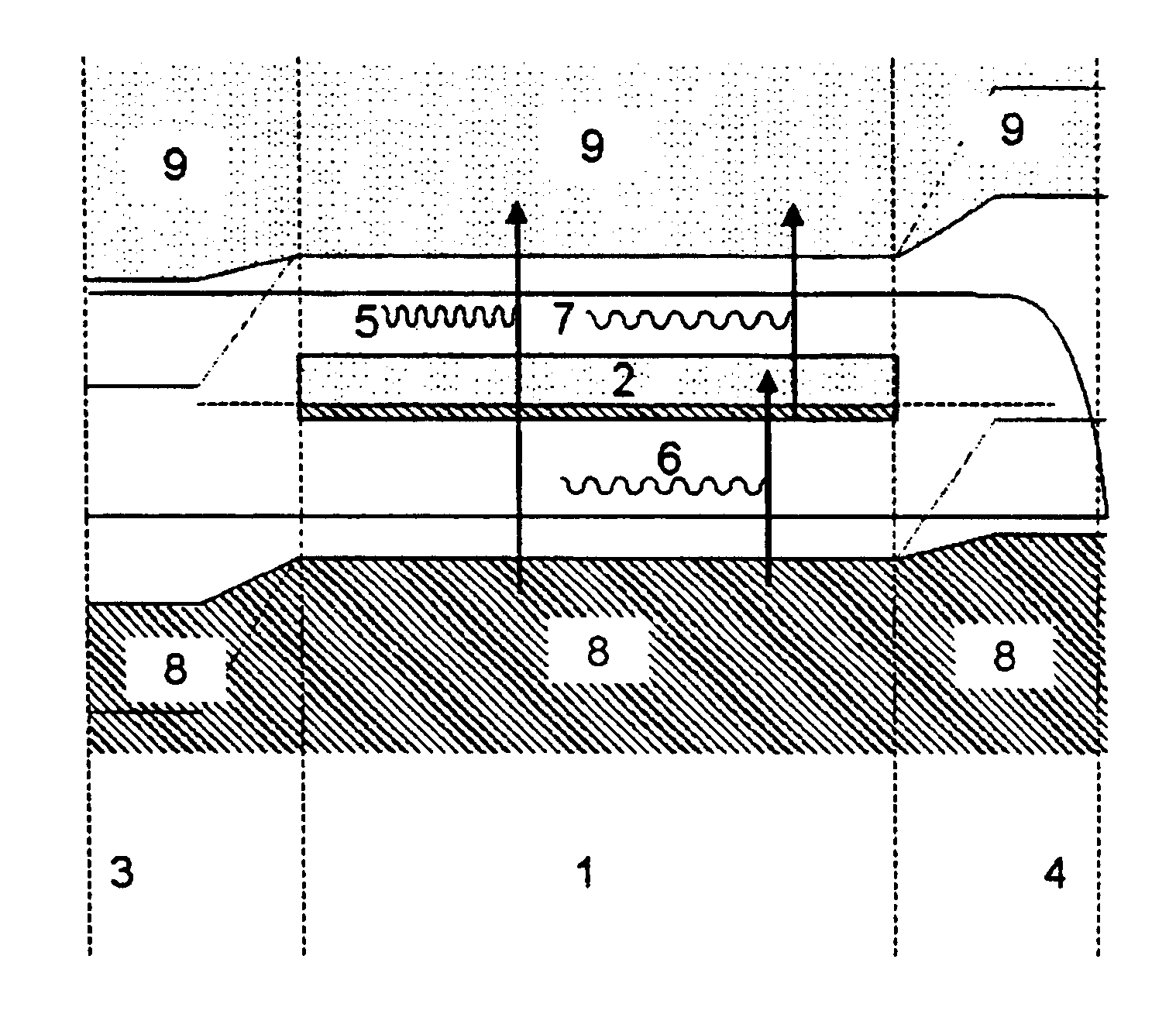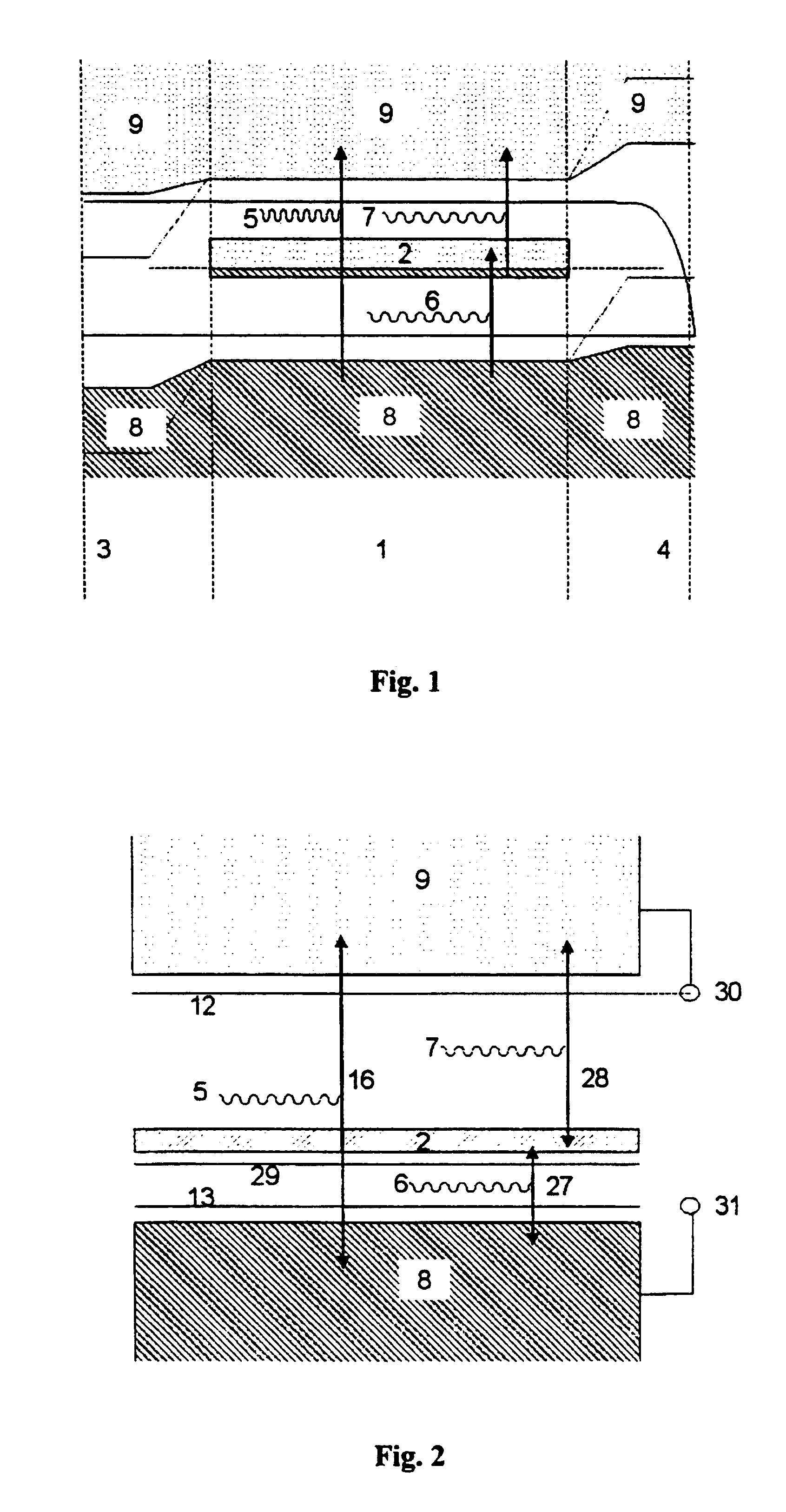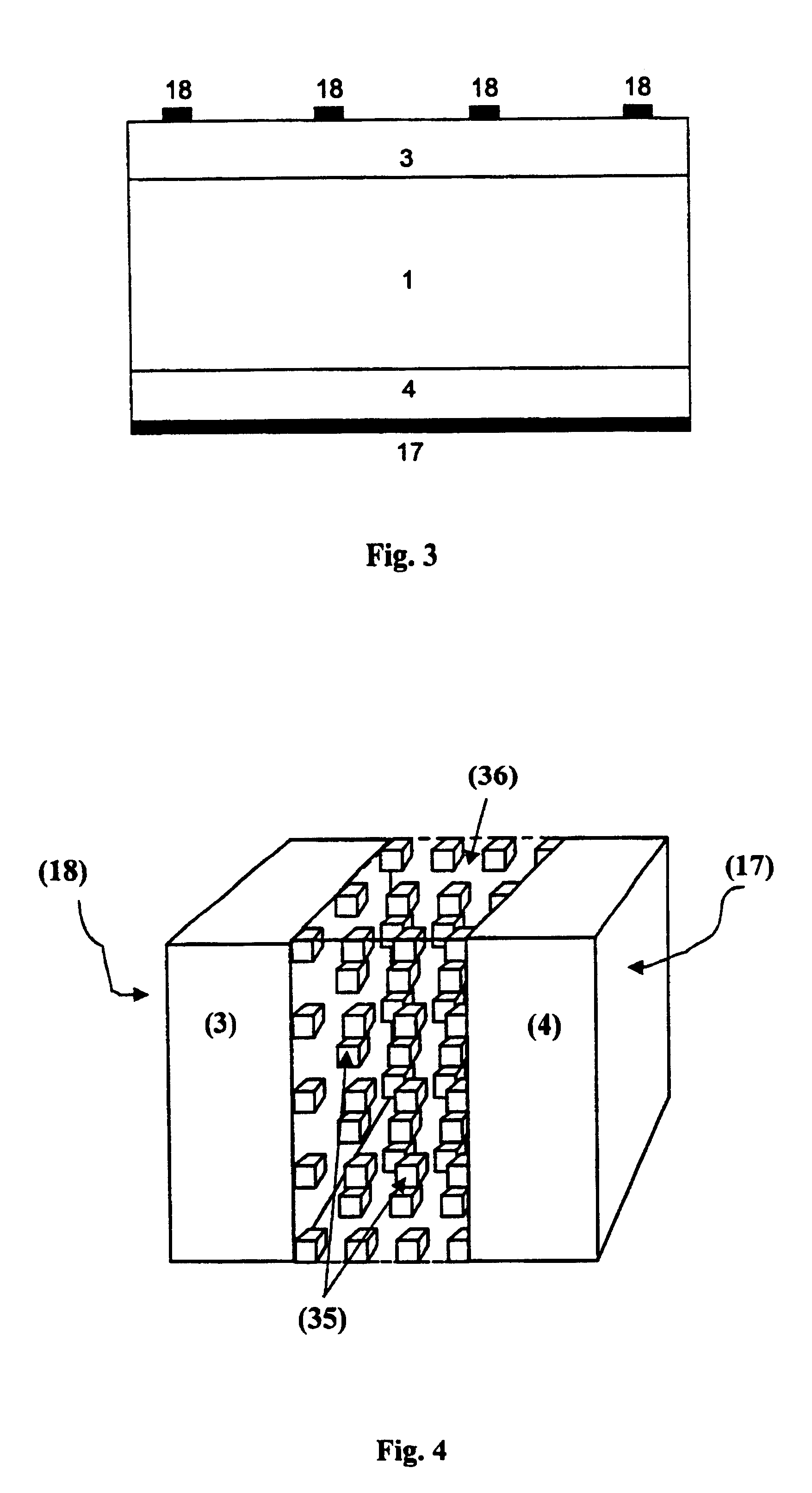Intermediate band semiconductor photovoltaic solar cell
a solar cell and semiconductor technology, applied in semiconductor devices, pv power plants, solid-state devices, etc., can solve the problems of inconvenient solar cells that do not completely convert the energy of the photons they receive into electric energy, and fail to use the excess energy provided by the photon
- Summary
- Abstract
- Description
- Claims
- Application Information
AI Technical Summary
Problems solved by technology
Method used
Image
Examples
Embodiment Construction
It is assumed that a semiconductor has an intermediate energy band like the one represented with (2) in FIG. 2. It also has, like the ordinary semiconductors, a conduction band (9) and a valence band (8). As in an ordinary semiconductor, the photons (5) can pump (16) electrons from the valence band (8) to the conduction band (9), creating electron-hole pairs. However, there are also photons (6) with less energy that pump (27) electrons from the valence band (8) to the intermediate band (2) and there are also other photons (7) that pump (28) electrons from the intermediate band to the conduction band (9). The concatenation of the pumping processes (27) of electrons from the valence band to the intermediate band and (28) from this to the conduction band complete the generation of an electron-hole pair.
Filling of the conduction n band (9) is caused as the difference between the pumping arising by means of the processes (16) and (28) and the drops through the same processes in the oppos...
PUM
 Login to View More
Login to View More Abstract
Description
Claims
Application Information
 Login to View More
Login to View More - R&D
- Intellectual Property
- Life Sciences
- Materials
- Tech Scout
- Unparalleled Data Quality
- Higher Quality Content
- 60% Fewer Hallucinations
Browse by: Latest US Patents, China's latest patents, Technical Efficacy Thesaurus, Application Domain, Technology Topic, Popular Technical Reports.
© 2025 PatSnap. All rights reserved.Legal|Privacy policy|Modern Slavery Act Transparency Statement|Sitemap|About US| Contact US: help@patsnap.com



